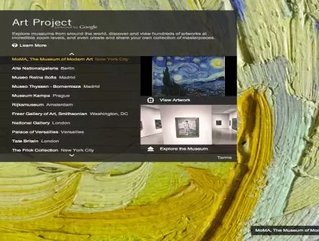What's new for Google in 2011

Before we get you into What's New for Google, you might want to check this article out as it appears in our March Issue of Business Review USA. For the tablet and iPad fans, it's way cooler to read this article while flipping through our user-friendly e-reader.
The official Google Blog is a personal favorite, along with another half a million readers, to read up on what’s on the horizon for Google products. Readers can learn about latest additions to the Google platform, along with other news and commentary from Google engineers, executives, spokespeople, and beyond. Googlers respond to the company being in the news, what it has to say about competitors, changes in the executive management team, and what sorts of things users can expect for the future.
Here’s a look into what Google is up to this year.
Google Latitude
Google first announced its introduction of Google Latitude way back in 2009 to help users stay in touch with friends and family in its version of a geo-location site. Today, 10 million people are active users on Latitude and Google announced that Latitude would be available in Google Maps 5.1 for Android.
According to the Google Blog, new additions to Google Latitude include:
• Notifications: Turn on check-in notifications in Latitude’s settings and get a notification to check in at a nearby place once you arrive. Never forget to check in again.
• Automatic check-ins: Choose to automatically check in at specific places you designate, and you’ll be checked in when you’re there. You can talk to friends or finish your bagel without fumbling with your phone.
• Check out: Once you leave, Latitude knows to automatically check you out of places so friends aren’t left guessing if you’re still there.
Google Art Project
Google announced the Google Art Project in February, a new tool that puts more than 1,000 pieces of art at a user’s fingertips with amazing detail. Amit Sood, Head of Google Art Project, writes in the blog that the idea started when a group of Googlers got together to think about how they could use technology to help museums make their art more accessible.
“We're also lucky here to have access to technology like Picasa and App Engine and to have colleagues who love a challenge—like building brand-new technology to enable Street View to go indoors! Thanks to this, and our unique collaboration with museums around the world, we were able to turn our 20 percent project into something you can try out for yourself today at www.googleartproject.com.”
Google Art Project is great for art fans that can’t travel to New York, London, Madrid, and beyond to see their favorite artists’ work. It’s also exciting news for museum goers who have always wanted to take photos of art they’ve seen up close and personal, but never could because of course, you can’t take pictures in museums. Street View technology allows users to take a virtual tour inside 17 of the world’s most acclaimed art museums.
The technology allows users to get extraordinary detail of a painting or piece of art using “gigapixel” photo-capturing technology with about 7 billion pixels – making for about 1,000 times more detailed than the average digital camera.
Google.org
Megan Smith, VP of New Business Development and GM of Google.org, says that the website works to contribute Google’s knowledge and skills to use technology to address humanity’s greatest challenges in areas of breaking technology and global health. Already, Google.org has formed projects like Google Crisis Response, which makes critical information accessible during times of natural disasters and humanitarian crises, and RE<C, Google’s work toward clean energy in the future.
Google Earth Engine
Google Earth Engine is one of the newest projects under the Google.org umbrella and takes advantage of Google’s computing infrastructure to create a planetary sciences computation platform that could help reduce negative environmental impact at scale, according to Megan Smith. “The first focus is on deforestation monitoring. Earth Engine has just made it through the pilot phase to a full project with its launch last month at climate change talks in Mexico. If we meet our goals to enable global-scale monitoring of changes in the planet’s environment, I believe that Earth Engine could play an important information role in helping to slow deforestation.”






